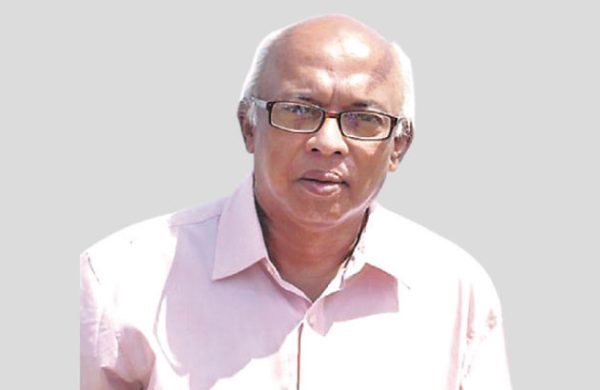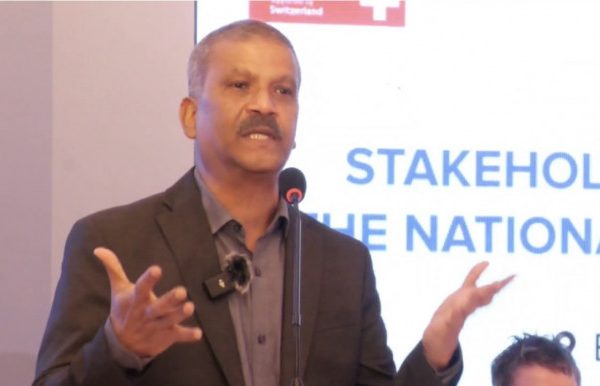Economic Outlook for 2025: What to Expect?
- Update Time : Tuesday, December 24, 2024

—Nironjan Roy—
We are nearing the end of another year. People are getting ready to welcome 2025 while trade bodies, think tanks, economic forums and research institutes are busy preparing reports accommodating economic forecast for the year 2025. The Organisation of Economic Cooperation and Development (OECD), a Paris-based research body, has recently released quarterly report revealing their prediction of a world economy that is expected to grow by 3.3% in 2025 which is slightly higher than its previous forecast of 3.2%.
In the said report, it is estimated that global economy may grow at a slightly faster pace in 2025 than previously forecasted, because inflation is getting tamed in the developed countries. However, there are concerns regarding tariff war and widening budget deficit in many large economies. In fact, OECD previously indicated that global growth rate will remain unchanged in the coming year. But after Donald Trum’s victory in the US election, the scenario has changed.
Despite the forecast, there are some concerning issues for the world economy (in 2025) including (i) Trump’s threat of higher tariff that might result in some retaliatory actions from other powerful economies, (ii) widening deficits in all large economies and (iii) rising sovereign debts of most developed nations including the USA and France. Most countries particularly the developed nations have been suffering from budget deficit since the outbreak of COVID-19 pandemic as governments around the world had to support economy and the people during the crisis period. Thenceforth, budget has never been balanced, instead the deficit in the budget has been widening years after years, which is considered as a major obstacle to propelling economic growth.
A major concern is rising government debt in most countries of the developed world including the USA, the UK, France and Germany. Sovereign debt in the USA has turned into an ever-increasing phenomenon exceeding 30 trillion, which is the highest in the world. The situation is so severe that the USA needs to increase highest debt ceiling after every six months in order to keep the government offices running and functioning in full throttle.
The report has also indicated that if the leading economies in the world do not adjust their fiscal policies to address the challenges, economy may not fare well (as predicted) in 2025. Some countries have taken these issues seriously and started revisiting their fiscal policies. France has already taken measures to cut short its spending and increase taxes with a view to reducing its budget deficit.
Another major challenge is the benchmark rate, which is now in declining trend across the world, particularly in the developed world. Central banks of most of the developed countries keep reducing their policy interest rate. Even the Federal Reserve in the USA has cut their benchmark rate for the third time last week.
The economists and experts opined that the Federal Reserve would maintain their key interest rate between 3.25% to 3.50% by first quarter of 2026 while European Central Bank is expected to keep their policy interest rate at 2% by the end of 2025. However, the Central Bank of Japan may raise their key interest rate to 1.50% by the end of 2026, because they want to come out of near zero interest rate trap.
According to the OECD report, with inflation continuing to fall further, central banks should keep reducing their policy interest rate. However, such continuous rate cut policy should be implemented carefully. While revealing positive economic outlook for the world economy and the developed countries, OECD has predicted negative growth for other two large economies, China and India. Their report suggests that India, which is described as a “shining light” for the global economy and China, which is the second largest economy in the world, may be held back by large declines in real estate price. The report has given mixed forecast about two other large European economies, Germany and Britain, because forecast for the former has been reduced from earlier 1% to 0.7% while the latter has been revised upward from 1.2% to 1.7% in response to the budget announcement of the new government.
Except China and India, the report released by OECD has not elaborated much on the economic growth of emerging markets. Structural adjustment is very important for emerging economies in order to keep pace with the developed world’s economic growth, but this fundamental change is very unlikely to happen; so, growth target might get affected.
So far, economic outlook for the year 2025 is positive, but the actual impact will depend on many factors. There are considerable challenges for powerful as well as emerging economies. So, countries will have to tread on this path (economic trajectory) carefully with attention to details. For the time being, let’s hope for the best.
___________________________________
The writer is a certified anti-money laundering specialist and banker based in Toronto, Canada.
Email: [email protected]


















